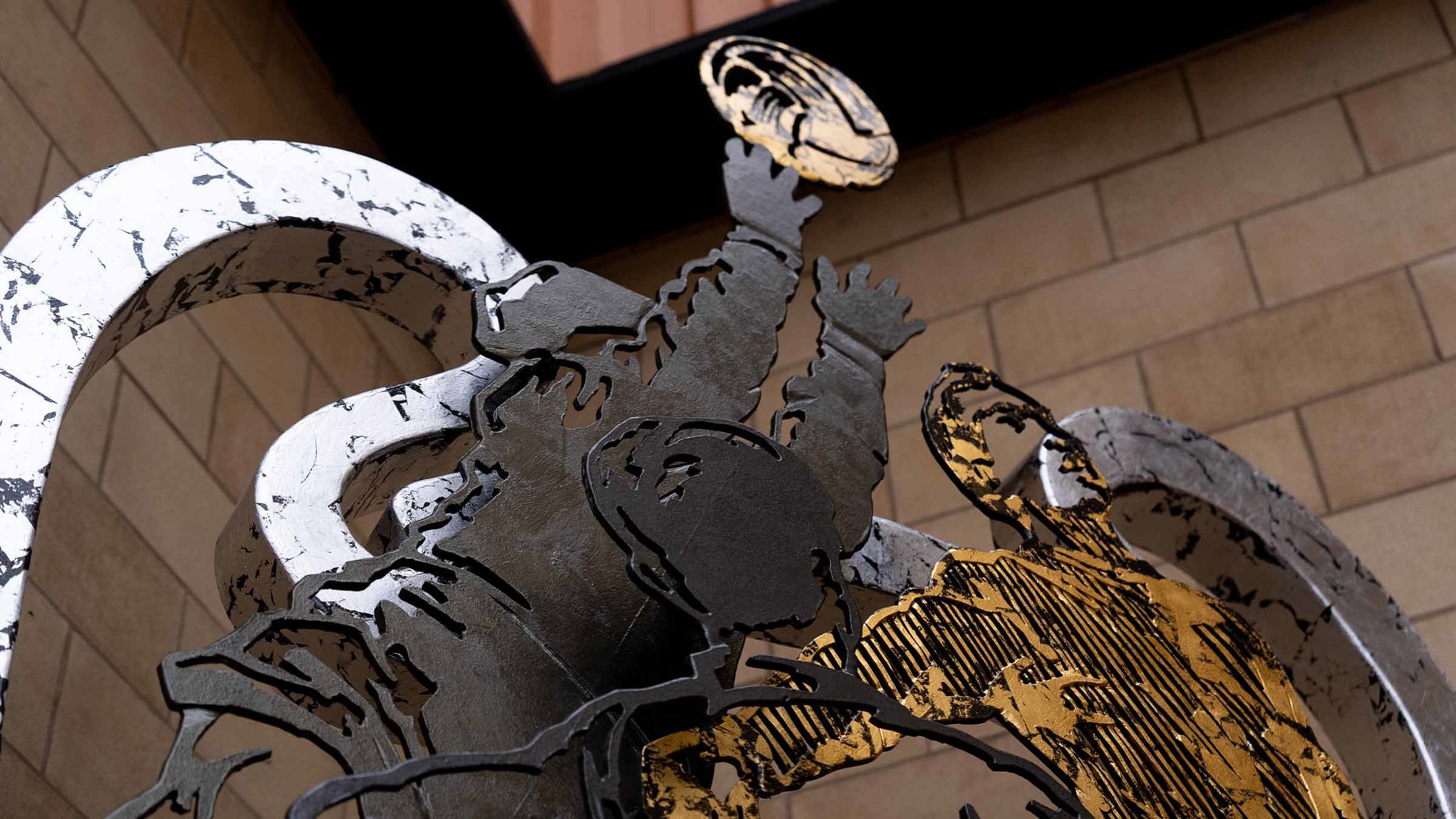Honved has lived within the culture of Wolves for 70 years but is now ingrained into the structure of Molineux permanently with an eye-catching sculpture, which was unveiled on Friday.
The man responsible for turning an innovative idea into a physical reality was Cradley Heath-based sculptor Luke Perry, who has created nearly 200 sculptures, but this was his first football project.
The official reveal on Waterloo Road represented the conclusion of weeks of hard work for Perry, who began the project in October and has created a stunning metal artwork to represent one of the most significant occasions in Wolves’ history.
“Everybody I talked to marginally into football knows so much about Honved, and its legacy is legendary,” he explained. “It means so much to so many people, so it’s been really nice to work on. People are really appreciative that I'm bringing it to life in a way that I don't think has ever been done before.
“The reason I do public art and sculpture is because it's so significant to people – it means so much. I can put a couple of months’ worth of work into something and it's then in the community forever. The delivery of my time versus how much it gives to people is really high.
“This is a wonderful thing, because I can see the effect my work is having on people and will do forever hopefully. I drive past the stadium weekly, so I'll see it for the rest of my life. I want it to be part of people's landscape in a very positive way.
“So much about this century is a throw-away culture, but if you make something that is a symbol of a community and falls apart after five years, it makes that community feel a bit valueless. But if you make something that's meant to last for hundreds of years and look good, it becomes part of the culture, so it's been a real honour.”

Following conversations between Perry and the club, the key aspects of the Honved story were sketched into a design by Perry, whose back catalogue includes the iconic Sikh soldier statue in Leicester.
“Being a being a public artist, you need to counterbalance what people want with what can structurally be made and what is going to be a really strong visual. The Angel of the North, Statue of Liberty, Nelson's Column are iconic because they’re simple.
“We needed to strip back things like the floodlights, it's important, but the trophy and football are important. Some things just don't transfer very well into sculpture, so you have to do it in a more allegorical way.”
The final product nods to both the European Cup, which the Honved victory inspired, and three of the key figures from that special night at Molineux: goalkeeper Bert Williams, Wolves captain Billy Wright and Honved superstar Ferenc Puskas.
But it’s the material, the style and the colours which Perry believes work the strongest, bringing a 1950s style to a 2024 piece, fusing two eras to allow modern-day Wolves supporters a glimpse of yesteryear.
“We needed to embrace the right visual aesthetic, so we looked at specifically print making and the way they manufactured programmes. There's a specific ink work style that lends itself to being transferred into steel really well. We worked with that as an idea, and it works just beautifully, to be honest.
“This touches on the aesthetic of the European Cup and supports the players structurally. For the font, we've used a 1950s Eastern Bloc mood that really works with what the game was about.
“There’s 24 karat gold on it, but instead of making it look shiny and new, it’s been weathered so the metalwork looks as though it’s been there since the 1950s. We've really tried to lean into the aesthetic of the time, whilst structurally making something that is clearly like a 21st-century piece of artwork.”

The magic of the piece is that it’s made for Old Gold fans by people within their own community: built in Cradley Heath, with steel sourced by Wolves fans in Netherton and galvanised by Molineux regulars based in Willenhall. Even the plaque was produced on Sedgley Street.
“Every single thing that is physically possible to have been done within the Black Country has been, and that is nearly all of it. Everyone involved has been very proud to be part of something that is very much in their heritage. That's a really nice part of the story.”






















